Optimism has been significantly lagging behind Arbitrum in absolute numbers and early development, but since the middle of this year, Optimism has clearly started to accelerate.
Author: Terry | Blockchain in Plain Language / Source: https://mp.weixin.qq.com/s/-536PNNOTATafyqypkCBjQ
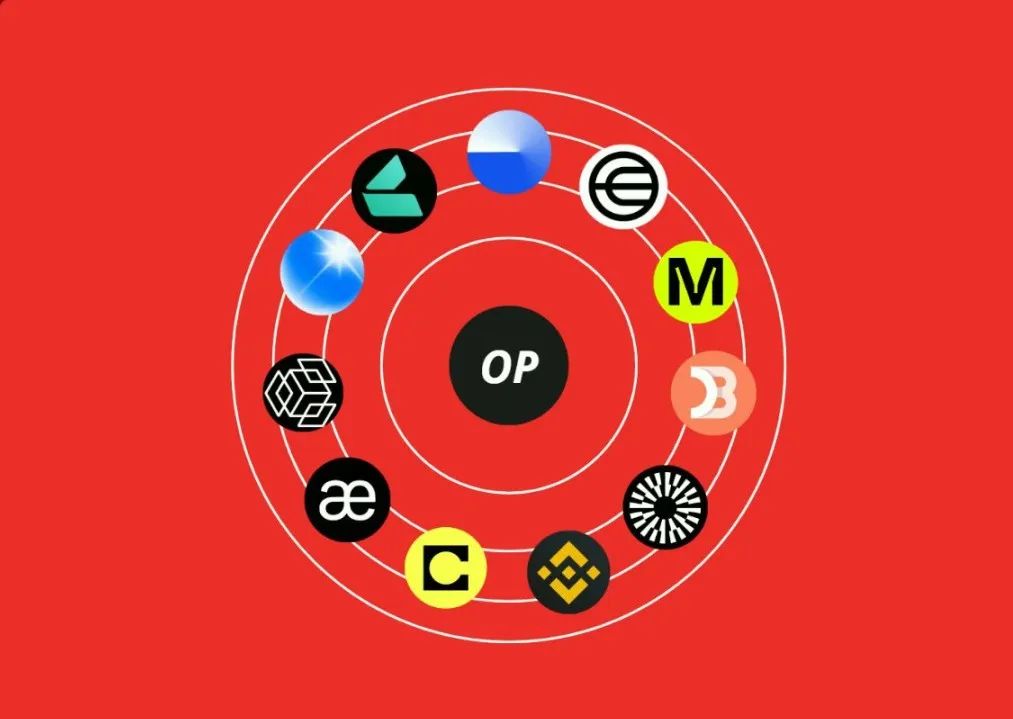
Dune data shows that since July 25th, the on-chain daily transaction volume of Optimism has started to "make a comeback," with the number of transactions remaining at around 600,000 per week, surpassing Arbitrum, which has always dominated the entire L2 track and has been suppressing Optimism, setting a new historical high.
The boost from World App is a key factor. As of the time of writing, the number of World App wallets has exceeded 1.1 million, with the number of Optimism wallets holding WLD reaching 425,000, accounting for nearly 40%. The number of independent addresses on Optimism has also exceeded 7.5 million, and TVL has seen a significant increase since the launch of Worldcoin.
Whether it's the highly anticipated Worldcoin within and outside the industry, or the overnight myth-making wave of Base, they are all built on OP Stack. The endorsement from these leading projects has also begun to present Optimism's multi-chain universe vision in the market.
01
OP remains the absolute winner in the Layer2 track
The Layer2 market is currently mainly dominated by the two mainstream expansion solutions of Optimistic Rollup and ZK Rollup, from a data perspective, OP projects still firmly occupy the majority:
There are a total of 7 Layer2 projects with TVL above $100 million, and although OP projects only occupy three seats, their market share exceeds 85%, far surpassing the 15% market share of ZK projects.
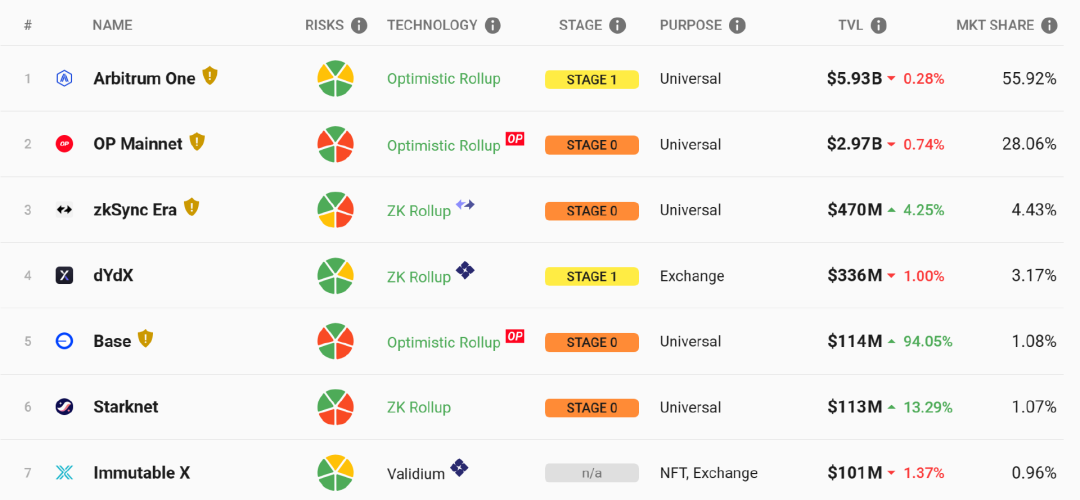
Among the three OP projects, Arbitrum holds an absolute leading position—Arbitrum alone occupies more than half of the entire Layer2 market share, which is equivalent to twice that of Optimism.
Therefore, as of now, the competition in the Layer2 track is still dominated by OP projects, with ZK still in a catching-up position, and the competition between Arbitrum and Optimism is the most critical within OP.
Now let's compare the trend of Arbitrum and Optimism from a data perspective.
Unique addresses
Data from Arbiscan.io shows that as of August 7th, the number of unique addresses on the Arbitrum network has exceeded 10.64 million (469,290), an increase of over 400% compared to the beginning of this year on January 1st, when there were 2.39 million unique addresses.
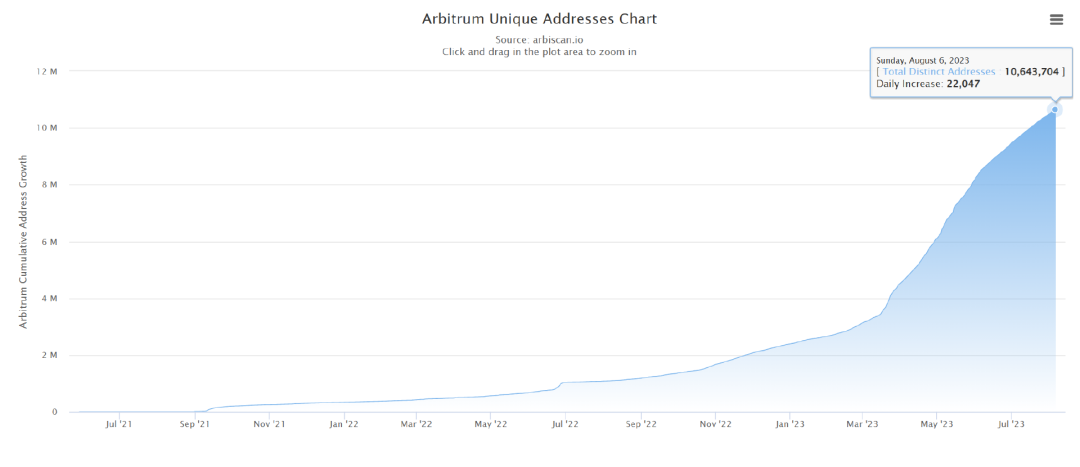
At the same time, Optimism browser data shows that as of August 7th, the number of unique addresses on the Optimism network has exceeded 7.62 million, more than three times the 2.4 million at the beginning of this year on January 1st.
The most noteworthy aspect of Optimism is that since March 13, 2023, it has started to accelerate significantly, with an average of over 1 million new unique addresses per day on the 10th, and a record-breaking 435,719 new unique addresses added on June 19th.
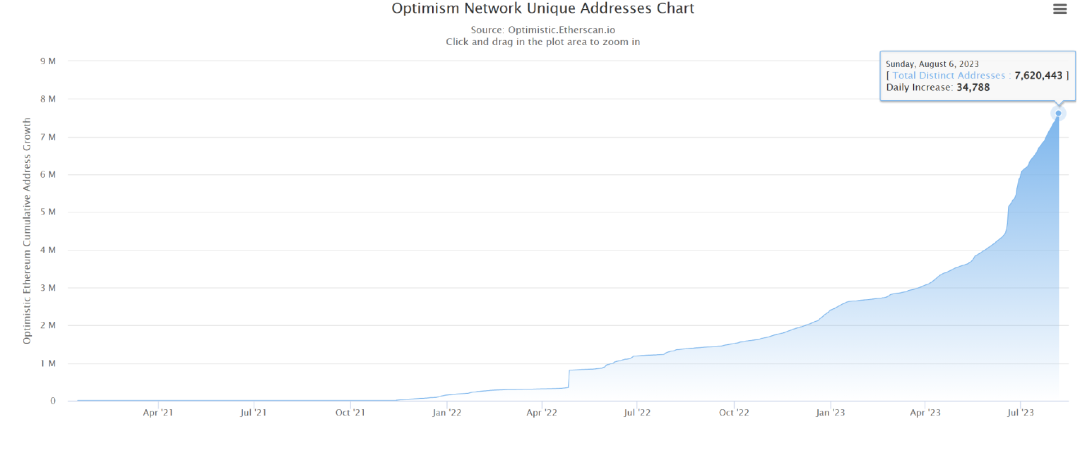
It is clear to see that Optimism has been significantly lagging behind Arbitrum in absolute numbers and early development, but since the middle of this year, Optimism has clearly started to accelerate.
Total Value Locked (TVL)
At the same time, Optimism has also entered an accelerated period in terms of total value locked since mid-June:
According to L2BEAT data, as of August 7th, the locked value on the Arbitrum network is about $6 billion, ranking first in the Ethereum Layer2 network in terms of locked value, but it has been stable in this range for about 4 months with minimal fluctuations.
Meanwhile, the locked value on the Optimism network has increased from $1.9 billion to $3 billion since mid-June, a growth of over 50%.
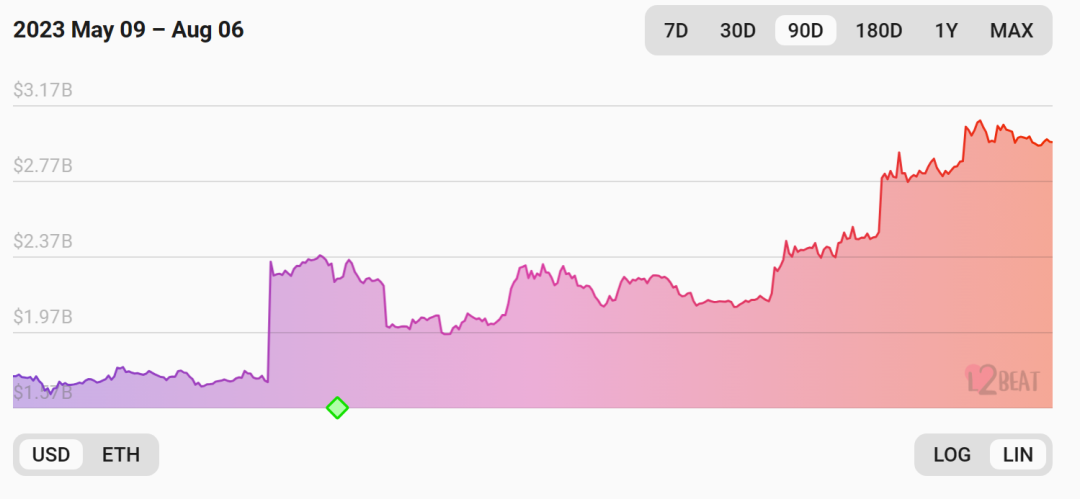
Optimism network growth
It is worth noting that when Arbitrum went live on September 2, 2021, the mainnet locked value exceeded $20 million, and then increased more than 20 times within a month, leaving a significant difference in magnitude compared to Optimism. Now, the gap between Optimism and Arbitrum has narrowed to two times.
In addition, the Base public chain mentioned earlier, which is part of the OP Stack, although it only has about 1% market share, is an indispensable key factor in gradually catching up with Arbitrum.
02
Optimism's Super Circle of Friends
So although Optimism has been lagging behind Arbitrum in on-chain data, it has recently shown a clear trend of making a comeback, thanks to its increasingly large circle of friends.
This "Optimism's circle of friends" mainly refers to the super chain network built on its OP Stack. So what is OP Stack?
It can be understood as a set of open-source software components that developers can use to assemble a customized Layer2 network according to their own needs.
Two years ago, when application developers were deciding on which chain to deploy their applications, they only faced a relatively simple choice: Ethereum, Solana, Cosmos, Polkadot, or other Layer1 blockchains, as Rollups had not yet launched their mainnets, and few people had heard of the term "modular stack." The differences between L1s (throughput, fees, etc.) were very obvious and relatively easy to understand.
Now, with the maturity of the Layer2 track, developers are faced with a richer set of choices, including the OP Stack route—directly launching a chain through OP Stack and gaining a place in Optimism's super chain ecosystem.
As of now, a considerable number of institutional friends have joined or plan to join the OP Stack circle of friends, covering leading projects in CEX/DEX, public chains, NFT, and other areas:
First and foremost is Coinbase's Base public chain based on OP Stack, followed by BNB Chain announcing the launch of opBNB, a Layer2 network based on OP Stack, on June 19th. With this, the two leading CEXs have joined the battle of Optimism's super chain.
Outside of CEX, NFT market Zora has also launched the Zora Network, a Layer2 network based on OP Stack, and a16z announced the launch of Magi, a Rollup client solution based on OP Stack, in April.
And the recently popular Worldcoin project launched by the founder of ChatGPT has also chosen Optimism: Worldcoin ID will build an application chain based on OP Stack, constructing an ecosystem related to on-chain identity systems.
In addition, some older Layer1 public chains or projects have also begun to join the OP Stack camp to transition to the Layer2 track:
On July 7th, the Public Goods Network (PGN) supported by Gitcoin announced its construction based on OP Stack;
On July 12th, the ZK-based Layer1 public chain Manta Network announced the launch of Manta Pacific, a Layer2 network designed for zero-knowledge proof (ZK) applications, based on OP Stack;
On July 17th, cLabs, the development organization of Celo, proposed to transform Celo from an independent EVM-compatible Layer1 blockchain to an Ethereum Layer2 based on OP Stack;
On August 11th, DeBank announced the launch of the DeBank Chain L2 testnet based on OP Stack and plans to launch the mainnet in 2024.
This has led to a very peculiar situation where the two OP giants in the Layer2 track are currently in a state of paradox, with Arbitrum clearly leading Optimism in conventional ecological aspects such as TVL and active user numbers, but Optimism is sprinting ahead in terms of institutional adoption, cooperation, and investment.
Perhaps for this reason, various Layer2 projects have also accelerated their own super chain ecosystem processes: For example, Arbitrum has laid out a new network called Arbitrum Nova designed for games, social applications, and high-throughput DApps, as well as an open-source toolkit called Arbitrum Orbit for building L3 networks, supporting developers to deploy and create their own chains.
The ZK track is also making efforts in its super chain ecosystem: In addition to zkSync announcing the launch of ZK Stack, a modular open-source framework for building custom ZK rollups, at the EthCC conference in Paris, StarkWare co-founder Eli Ben-Sasson also stated that Starknet is about to launch Starknet application chains (Appchains), which can be launched by applications using the Starknet stack, with features such as customizability and decentralization.
From this perspective, under the stimulation of Optimism's continuously expanding circle of friends, the scalability battle of Layer2 is also accelerating towards an ecological battle. Whether OP Stack, which has the first-mover advantage in applications, can maintain its lead in this challenge, remains unknown.
03
The Multi-Chain Universe Vision of OP Stack
The narrative of Optimism's super chain is not actually new. Projects like Cosmos have long been deeply involved in the "one-click chain deployment + modularization" direction, but compared to the already launched and star-studded OP Stack, Cosmos' application chain has performed lukewarmly this year.
The main reason is that in today's competitive public chain landscape and the hot Ethereum Layer2 track, OP Stack happens to provide an alternative path:
By relying on the Ethereum ecosystem, it helps ecosystem partners join and share resources with Ethereum, enjoy the high security of Ethereum, and still choose to use their native token as gas.
It can be said that in the early development of the Optimism network, it was mainly dominated by the Synthetix ecosystem, leading to a lack of strong leverage in its competition with Arbitrum, and it has been in a catching-up phase.
However, starting this year, Optimism has found an effective path of differentiated competition with the new narrative of the OP Stack super chain, gradually gaining a foothold.
Especially with the support of partners like Base and opBNB, not only has it given the Optimism super chain ecosystem a strong brand endorsement, but it has also provided a source of sustained growth for future users, transaction volume, and more.
After completing the mainnet upgrade to Bedrock on June 7th, the fees on the Optimism network were reduced by about 50%, making Optimism closer to the vision of a "super chain."
Overall, this is a win-win choice for Optimism and its ecosystem partners. After all, under the lessons learned from many predecessors, the competition in the Ethereum L2 ecosystem is no longer the mainstream narrative point of concern:
Compared to scalability and performance improvements, how to attract more developers, projects, communities, and markets to create a prosperous ecosystem with various use cases in DeFi applications, NFTs, GameFi, etc., is the key to avoiding the embarrassing situation of "overvaluation" but stagnant public chain development.
"Relying on the Synthetix ecosystem in the early stage, and later leveraging OP Stack," OP Stack, which relies on the Ethereum ecosystem, has taken the first step in this regard and is becoming a "Cosmos universe based on Ethereum," attempting to build its own "application chain narrative."
04
Conclusion
Overall, although Optimism lags behind Arbitrum in on-chain data dimensions, its super chain network built on OP Stack has made significant progress in ecosystem partnerships, application areas, and collaborations.
Despite being slightly behind in data, its continuous attraction of institutions and partners, shifting the focus from performance to ecosystem development, has great development prospects.
Friends, what are your thoughts on Optimism and Arbitrum? Feel free to comment and discuss.
免责声明:本文章仅代表作者个人观点,不代表本平台的立场和观点。本文章仅供信息分享,不构成对任何人的任何投资建议。用户与作者之间的任何争议,与本平台无关。如网页中刊载的文章或图片涉及侵权,请提供相关的权利证明和身份证明发送邮件到support@aicoin.com,本平台相关工作人员将会进行核查。




